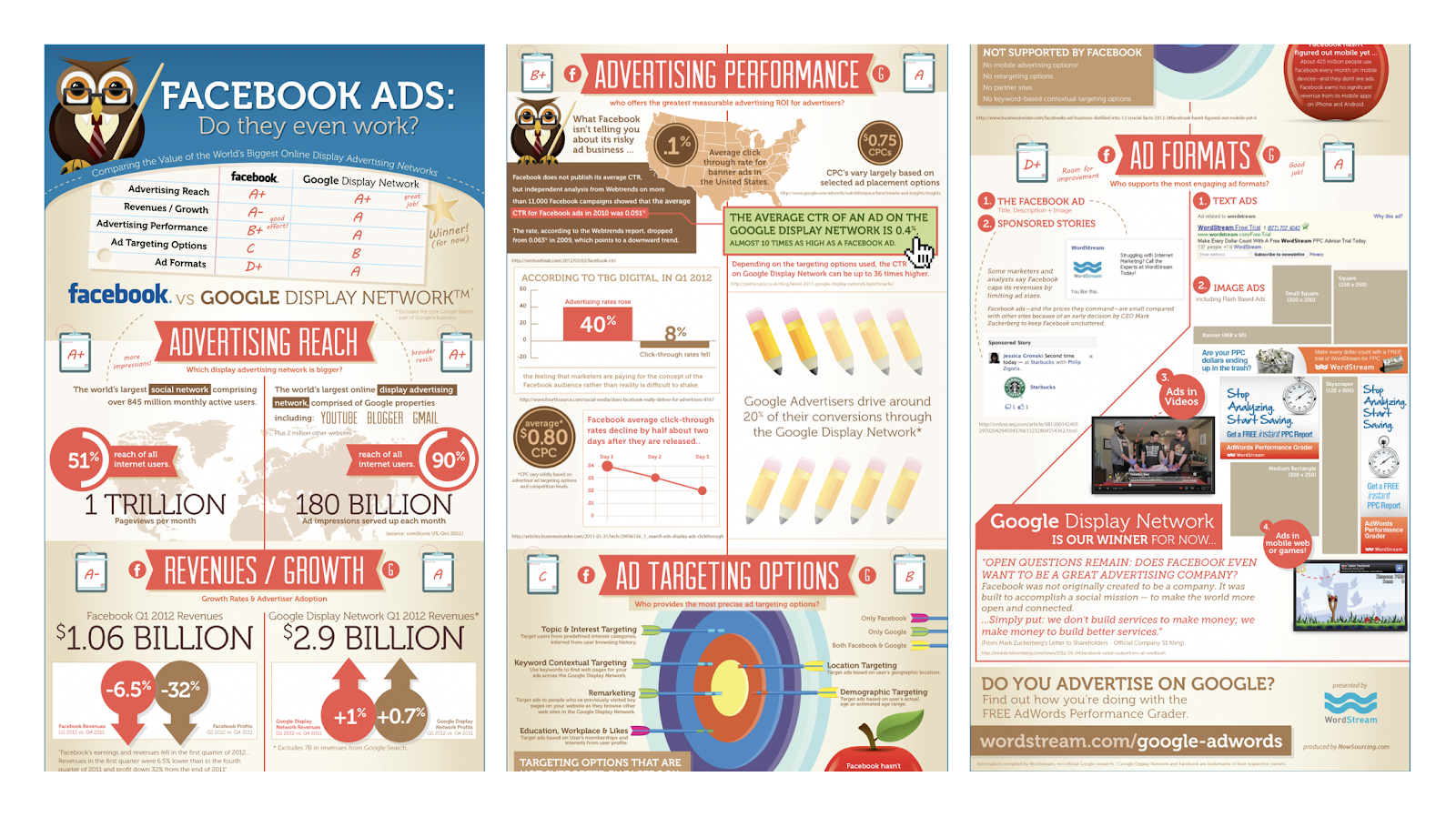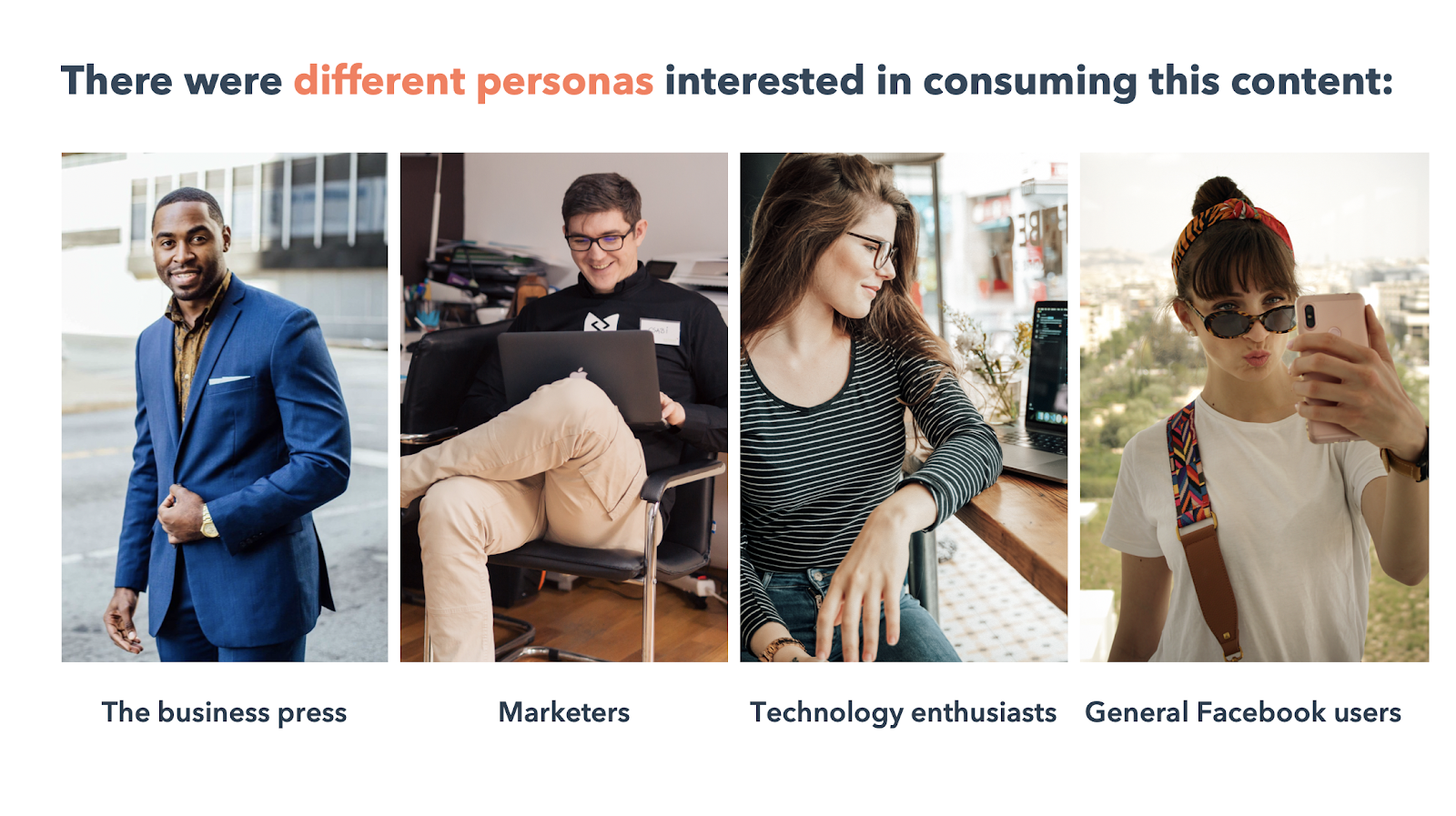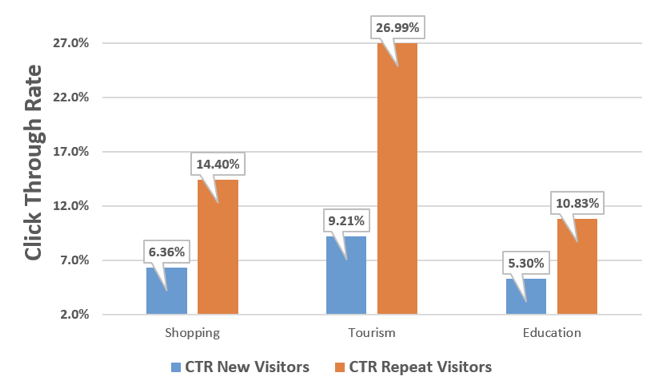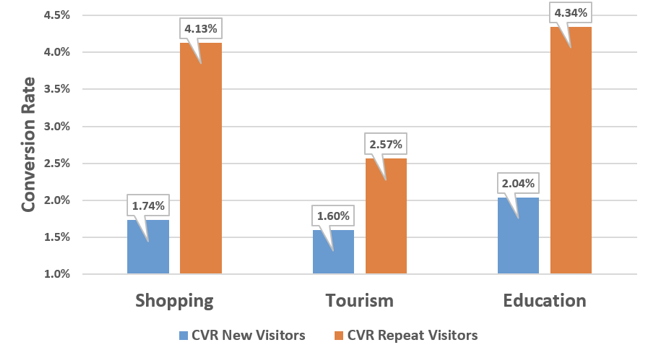We all dream about that one campaign that just really takes off -- I'm talking about the Game of Thrones of the content marketing world.
However, few marketers can say they've created a piece of content so effective that it completely changed the course of their business. Well, Larry Kim, founder of WordStream and CEO of MobileMonkey, is one of those marketers.
Here, I sat down with Larry Kim to discuss one of his campaigns for WordStream, which went viral and resulted in millions of links back to WordStream's website.
Keep reading to learn Kim's ten tips for effectively creating viral content -- but first, let's dive into the backstory of the campaign itself.
Spoiler alert: The tips throughout this blog post are taken from our Content Strategy Course. To see my interview with Larry Kim and learn how to build a comprehensive content strategy, take our free course here.
Larry Kim's Viral Campaign -- The Backstory
On the eve of Facebook becoming a publicly traded stock, Larry Kim spotted an opportunity that no one else saw. Facebook's IPO was a global topic of discussion across technology and business media -- everyone wanted to buy these shares.
But no one was talking about the return on investment (ROI) of advertising on Facebook, which was a big part of Facebook's value in the marketplace. That's when Larry Kim decided to craft a story comparing and contrasting the ROI of advertising on Facebook vs. advertising on Google.
Larry's report took a visual and data-heavy approach to a topic no one else was talking about. He was even able to spin the report into multiple infographics to make the content more engaging.
About his instincts, Larry told me: "The Facebook IPO was the biggest story of the time. And so we absolutely needed to come up with some way to insert ourselves into that conversation."
At its core, his campaign:
- Compared and contrasted the ROI of Facebook ads vs. Google ads
- Quantified the typical average results via clickthrough rates, conversion rates, and costs
- Gave a final grade to both Google and Facebook ads according to their strengths and weaknesses
Here's what Larry's infographic looked like:

It sounds like a simple idea, but it was executed flawlessly. Larry Kim's report went viral, sparking discussion on ABC News, Forbes, Business Insider, and more.
What Larry had hoped would bring in a few hundred placements resulted in millions of links back to WordStream's website from over 85 countries around the world.
Impressive, right? To discuss his strategies for promoting and analyzing his campaign, I sat down with Larry Kim. Here, let's dive into what the rest of us can learn about successful content from Kim's approach.
1. Content marketing is a numbers game.
This wasn't Larry's first piece of content. This wasn't even Larry's one-hundredth. In reality, Larry had already published thousands of pieces of content by the time this campaign took off, ranging from podcasts to blog posts to videos to ebooks.
Throughout his career, Larry had experimented with different types of content. He'd seen success with other articles revolving around advertising on Google with topics like “How does Google make money?” and “What are the most expensive keywords on Google?”.
After writing about Google for so long, he had a hunch that a report comparing Google to Facebook would be effective. He was right, but he never would have gotten there without producing all the content that came before it.
Sticking with a long-term content strategy is mandatory in order to achieve this type of success.
2. Timing your content to relevant events can have a huge impact.
Producing a large amount of content is undeniably important for becoming a better content marketer, but so is your timing. In Larry's case, everyone was talking about Facebook because their IPO was on the horizon.
Larry was able to craft a story to fit right into the discussions that were already taking place on a global stage.
Here are just a few of the headlines Larry's report was featured in:
- DATA: Google Totally Blows Away Facebook On Ad Performance
- Facebook's IPO Means What For You?
- Study: Google ads work better than Facebook ads
Writers were already excited to write about Facebook, but Larry's report further incentivized writers to write about Facebook's ads performance compared to Google's.
Ultimately, Larry did more than just join conversations already taking place around the world -- he also helped form them.
Now, I know a trending event like Facebook's IPO doesn't come around all that often. But there are still other ways you can use timing to your advantage. Here are a few steps to help you do what Larry did for your own business:
- Get notified about breaking news in your industry with the help of Google Alerts. You'll be the first to know about important news releases that your company could write about.
- Explore search volume for keywords related to these news stories with Google Trends. You'll want to make sure that the story you want to write about also has significant organic search volume.
- Find a unique angle that others aren't writing about. This will help you stand out from the rest of the stories out there and spark unique conversation.
3. One story can have value to many personas.
As marketers, we often think about targeting our content to specific personas. However, many stories aren't only relevant to one type of reader. In this case, Larry Kim saw the opportunity to spin the story of Facebook ads vs. Google ads in a few ways to resonate with different audiences.
For instance, once Larry wrote and promoted his initial report, he quickly saw four personas that he could reach with personalized versions of his content:
- Businesses, and the business press, were interested in this story from a financial perspective.
- Marketers were excited to learn how these ad platforms compared so that they could improve their own marketing tactics.
- Technology enthusiasts found this story relevant because it was a bold and timely article about the largely popular social network.
- Lastly, Facebook users were interested in this story because it taught them about a new side of the Facebook platform -- advertising.

What did Larry Kim do with these insights? Well, he took his original report and syndicated it into infographics specific to each audience -- like this one. His approach was super simple but effective. To make each infographic resonate with its intended audience, he tweaked the headline to frame the story in a way that appealed to motivations of each persona.
What he found was that even in specific niches like online advertising, there's a ton of opportunity for innovation when creating specific, targeted content.
4. Connections in the industry can last a lifetime.
Creating relevant content is one thing -- but pitching this content successfully to online publications is an entirely different challenge. If you're just starting out with content marketing, begin building up your outreach list now.
Start off by identifying relevant publications who might be interested in your content and make connections with the key people at each of these organizations. Build an email list that you can continue to reuse and expand in the future. Here are some great outreach templates to help get you started.
Since this wasn't Larry Kim's first piece of content in the online advertising niche, he already had a database of over 1,000 reporters from all of the major technology and business publications that cover Google and Facebook from an advertising perspective.
By continually providing valuable content to these reporters related to their niche, he established connections that he could rely on. This was pivotal to the success of his monumental campaign.
5. Paid promotion can amplify the success you see from organic promotion.
Larry told me his team chose to leverage their piece's timeliness by putting a budget behind it -- "We spent tens of thousands of dollars promoting the story, even though it was doing fine organically. It was just to get more mileage out of a winning hit."
Now, if you're anything like me, you might be thinking -- Why would you spend a dollar on paid promotion when you have a runaway story that's doing great on its own, and certainly doesn't even need a dime to get more coverage?
However, putting money behind a popular piece of content can only accelerate its performance. Using paid advertising to support your most impactful campaigns can actually be the best use of your paid budget. Since the piece has already proven effective, you know it'll do well on paid, too.
6. A great campaign can impact the success of future campaigns.
It's easy to think that once a campaign is over, you'll stop reaping the benefits. You move onto the next campaign and hope for an even better performance next time.
However, when you have an exceedingly successful campaign, you can still see its impact days, months, and years later.
You might not be surprised to hear that WordStream's website experienced a huge spike in traffic over the course of Larry's campaign. But it's critical to note even after the campaign ended, they still saw an increase in traffic to their website.
The WordStream brand became so strong that people around the world continued to turn to WordStream for resources in the Facebook and Google advertising space. As Larry notes, "People are impacted by their subtle biases and they tend to favor consuming content from sources they've heard of before."
Here's what this looked like for WordStream after Larry's campaign:


With the help of one great campaign, you can significantly impact your numbers on future campaigns. You'll find yourself in an entirely new normal when it comes to metrics like email open rate, blog traffic, and landing page conversion rate.
7. You can manage your reporting with multiple free tools.
You might think you can't get quality reporting tools without paying a boatload of money -- fortunately, this isn't true. For example, here are some of the free tools that Larry Kim used to measure the success of this campaign:
- Google Analytics for traffic and engagement
- Google Search Console for backlink reporting
- Facebook Analytics for insights to audience types and their interests
- SEMRush for additional linking data
I use all of these tools myself here at HubSpot. Plus, HubSpot's own free tools can be used to run email campaigns and conduct paid ads, too.
8. Content marketing can lower your cost-per-customer acquisition.
There are clearly many reasons to aim for that one big content marketing campaign. But there's a lot to be said about optimizing your content strategy for the long haul, too.
According to Larry Kim, one of the reasons WordStream is a successful business is because their cost-per-customer (CPC) acquisition is so low. When I say CPC acquisition, I'm talking about the investment that's required to get a new paying customer for your business.
In Larry's case, he was able to bring in new customers without spending a great deal of money.
How was he able to do that? Well, simply put, it had a lot to do with content marketing.
WordStream's blog now generates millions of visitors every month. This is a huge accomplishment for a company in such a niche topic like pay-per-click advertising. Larry's dedication to long-term content marketing efforts played a huge role in the company's success.
9. Historical optimization can get you more value out of your content.
Campaign window over, reporting done -- time to take the learnings and start the next campaign, right? Not so fast, my friend.
Historical optimization can significantly improve the long-term impact of your most effective pieces of content. Larry's report clearly had a huge impact because it aligned perfectly with Facebook's IPO. But even years later, they're still using this content to drive traffic to their website.
They've continued to keep this content fresh by updating it with new data. In fact, it was last updated just a few months ago.
Here's an example of a content strategy blog post that we here at HubSpot update frequently because it drives so much traffic to our blog. Each spike is a result of historical optimization. By frequently updating this piece of content, we're able to keep this blog post relevant. Plus, we can re-promote every time we update it:
 To help streamline the updating process, try keeping track of all of your content in a content audit sheet. By keeping track of your highest-performing pieces of content, you'll be able to identify the greatest opportunities for historical optimization. Keep an eye out for content that receives a lot of organic traffic and ranks for keywords relevant to your business.
To help streamline the updating process, try keeping track of all of your content in a content audit sheet. By keeping track of your highest-performing pieces of content, you'll be able to identify the greatest opportunities for historical optimization. Keep an eye out for content that receives a lot of organic traffic and ranks for keywords relevant to your business.Download a Content Marketing Workbook to get started auditing your content.
10. Successful campaigns stem from creative ideas.
Marketers are no strangers to creativity. But it can be hard to be creative over and over again just waiting for that one campaign to take off. In fact, it's often exhausting -- trust me, I know.
Larry gets it, too. From this campaign, he's gained a greater understanding of how content marketing works. He told me that every time you create a new piece of content, like a blog post, white paper, infographic, or video, you're essentially "auditioning a new piece of content that you hope will resonate with your audience."
Most of the time, the content you produce goes nowhere. It reaches its goals, but it doesn't have that massive impact you'd hoped. That's okay! It's still critical you remain creative, take risks and try new angles on your campaigns, and then hope it's the right time and place to gain traction.
Even in a niche topic like Facebook ads, Larry found a story with global interest. If you're creative enough, there's always a way to cast a wider net for the content you're promoting, even beyond the scope of the niche audience you're targeting.
If you'd like to learn more about this campaign and how to create a successful content strategy for your business, check out HubSpot Academy's new Content Strategy Course.
No comments:
Post a Comment